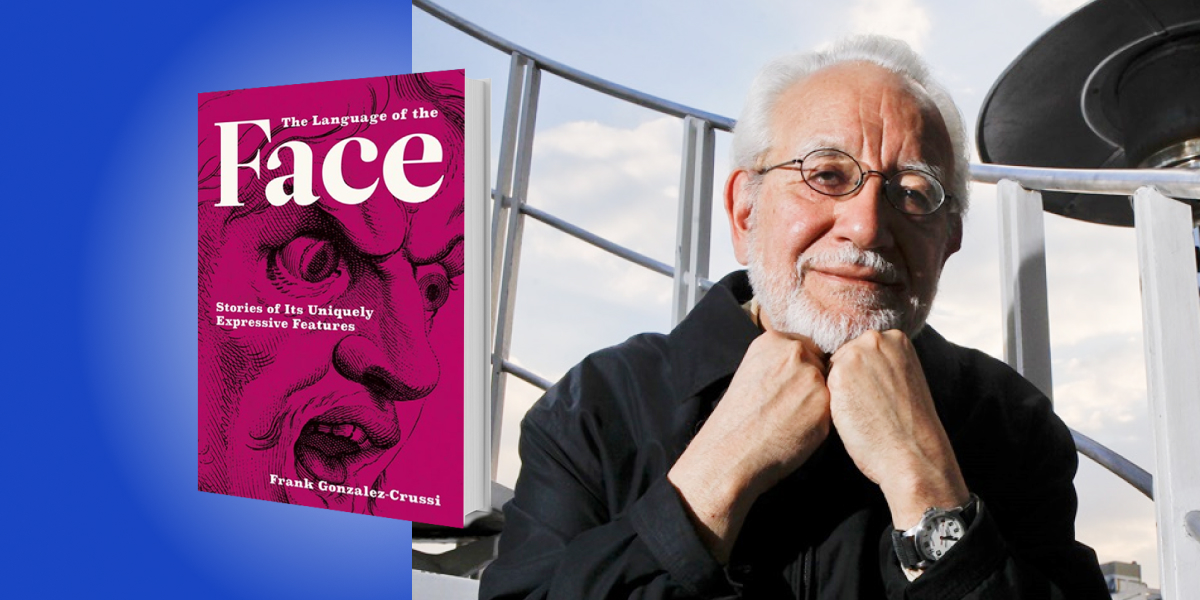Frank Gonzalez-Crussi was a professor at Northwestern University’s Feinberg School of Medicine for nearly forty years. His specialization is pediatric pathology, and he has published 22 books.
Below, Frank shares 5 key insights from his new book, The Language of the Face: Stories of Its Uniquely Expressive Features. Listen to the audio version—read by Frank himself—in the Next Big Idea App.

1. Is there a relationship between character, temperament, and outward facial appearance?
It is almost instinctive to assume that there must be a direct relationship. We see someone for the first time and cannot avoid the tendency to feel attracted or repulsed. Sometimes we say to ourselves: “This man looks devious; he must be tricky, cunning, or sly.” Alternatively, we may think: “This woman has a frank, open face; she seems trustworthy.”
Much of what we do in life is based on first impressions. Historically, there was a serious attempt to create a science based on such observations. All efforts in this regard have failed thus far. The Language of the Face takes a light, sometimes humorous view of some of the failed attempts to create the scientific basis of physiognomy.
2. Physiognomists of the past conferred great value on the shape of the nose in their attempts to guess at psychic constitution.
Their basic premises were mistaken, but the shape of the nose has nonetheless played a major role in individual human lives. To wit, the abhorrent myth of the so-called “Jewish nose,” became a matter of life and death for the unfortunate who, regardless of their ethnicity, were judged to have such a nose by ignorant and fanatic authorities obfuscated by the Nazi ideology.
“Nasal loss is the source of moving, dramatic stories as well as humorous, entertaining narratives.”
There exist plenty of stories and anecdotes about the inconsistencies, irrationalities, and odd behaviors related to nasal shape. The loss of the nose by traumatic amputation used to take place as a consequence of sword or saber slashes when duels were in fashion; or, in some countries, as the legal penalty for some crimes, most notably adultery. Nasal loss is the source of moving, dramatic stories as well as humorous, entertaining narratives. These are accompanied by interesting treatments historically used by surgeons to correct the deformity of nasal amputation.
3. What constitutes an attractive face?
I reviewed the measurements and geometric criteria that have been thought to produce beauty in a face. The conclusion is that these criteria are applicable to two-dimensional representations; but in a living, animated, motile, three-dimensional human face, many other factors contribute to making a face beautiful.
A beautiful face is known from the remotest antiquity to be a cause for falling in love. But what have people done to fall out of love? In other words, what are historical remedies for love? There is, of course, the famous Leucadian Leap, a method used by the ancient Greeks in which a disappointed lover threw himself or herself from a great height into the ocean. The shock cured many lovers of their obsession. This highly effective method had a minor inconvenience, however: The lover could lose his life together with his passion. There are modern treatments that are equally colorful.
4. The lips are a major constituent of facial physiognomy.
There was a time when physicians meticulously observed lip movements as part of their diagnostic workup. The so-called sardonic smile was believed to have a high diagnostic value in some diseases. Because its verbal description was not easy, some clinicians referred to classical paintings which they believed graphically depict the features of that smile.
“There was a time when physicians meticulously observed lip movements as part of their diagnostic workup.”
The lips are also the instruments of kissing, and readers will also find in my book a highly entertaining explanation from a philosopher of the Italian Renaissance, about how a passionate erotic kiss causes a strong emotional impact.
5. The eyes as the windows of the soul.
Eyes should always occupy a prominent place in any discussion of physiognomy. But what happens when they are disordered or dysfunctional? There exist astonishing accomplishments of men whose intellectual or artistic productions are widely admired despite the total loss of eyesight—for instance, outstanding blind sculptors that have gone down in history.
And what of the old superstition of the evil eye? Such abnormal eyes were supposed to produce a malignant gaze; the abnormalities of those eyes are biologically explained with modern concepts of ophthalmology. Despite scientific explanations, the superstition of the evil eye has persisted and still thrives in full force, with plenty of quaint, picturesque anecdotes in present-day Neapolitan culture.
To listen to the audio version read by author Frank Gonzalez-Crussi, download the Next Big Idea App today:































